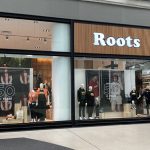The speculation of Nike and Foot Locker getting back together may seem logical based on the hit both companies have taken in their respective sales numbers of late, but in its recently filed 10-K report for fiscal 2003 Nike gave no hint that it sees the relationship improving with its largest customer in the near term.
The company said it expects that U.S. footwear sales to remain below earlier levels for the rest the year due to its dispute with Foot Locker Inc., and in the filing with the Securities and Exchange Commission on Thursday, Nike said that it doesn't expect to fully offset the revenue decline from Foot Locker in the short term and that the amount of future sales to FL are “uncertain”.
No retailer was more than 10% of Nikes business last year, while Foot Locker was 11% of fiscal 2002 sales and 12% of fiscal 2001. The U.S. business was clearly impacted as the domestic business represented just 49% of total revenues in fiscal 2003, down from 53% in 2002 and 54% in 2001. The weaker dollar also played a large role in the share decline.
For fiscal 2003, Nikes three largest customers accounted for approximately 27% of Nike brand sales, excluding Nike Golf and Bauer Nike Hockey, in the U.S. and 24% of total U.S. sales. The three largest non-U.S. customers yield 14% of non-U.S. business.
The company is still highly reliant on the futures business, although it has slipped a bit. The company said it generates 91% of footwear sales from futures and ships 95% of futures orders. Futures were 92% of fiscal 2002 footwear sales and 86% of fiscal 2001 business.
We did find one interesting note in the 10-K that futures orders for the back half have actually increased since the company issued its press release in late June. Worldwide futures are now up 5.0% versus the 4.4% gain reported previously and U.S. futures are now down 9.0% versus the previously-reported 10% decline.
The gain came from changes in the U.S. order book, “most notably additional orders of footwear from Foot Locker”. The change doesnt net a big shift in the relationship, but the fact Nike inserted the note could be of interest to a number of people. NKE did note that the orders were “consistent” with its realignment strategy.
U.S. footwear unit sales of footwear “increased slightly” from fiscal 2002, but were “more than offset” by the declining average selling price of the product. Nike pointed to “a higher percentage of sales of classic footwear and kids models” as the reason for the ASP reduction. The ASP for futures continued to decline in fiscal 2004 Q1 futures, but rose for Q2 futures. Futures in apparel are 67% of shipments, down from 69% last year, but even to fiscal 2001 as a percentage of shipments.
Nike also said it expects demand for golf products in the U.S. to remain weak due to the slow U.S. economy.
One interesting note in the footwear production stats was that Indonesia makes up 27% of all production. The companys Indo operations have seen quite bit of turmoil over the last year as Nike moved to cut back production there, spurring a number of often violent worker protests. China made up 38% of production, Vietnam 18% and Thailand produced 16% of footwear. Italy, Taiwan and South Korea were a combined 1% of footwear production.
The largest supplier was about 7% of total production.
Apparel production was a bit more diverse at its source, with more than 35 countries making goods worldwide. Only 1% of product was made in the U.S. The largest supplier in apparel was also 7% of total production.
In other 10-K notes, Nike:
- Has 161 retail stores in the U.S. with 75 outlet locations and 65 Cole-Haan locations.
- Has 175 retail locations outside the U.S.
Spent $1.2 bn in “demand creation” in 2003, up from $1.0 bn in 2002. - Will spend $1.2 bn in endorsement contracts over the next 5 years with $339 million paid out in 2004.
- Employs 23,000 people worldwide.
- Turned inventory 4.4x in 2003, up from 4.3x.
- Saw U.S. inventory up 5% to $641 million.
>>> While NKE may have scored a moral victory in their ideological battle with their biggest customer, the impact on their business was much greater than expected. We believe both will find ways to do business that meet both companies needs, but do not expect to see the relationship return to its former levels or content















